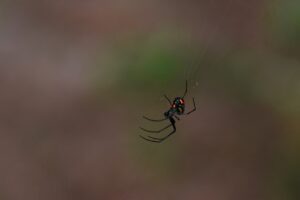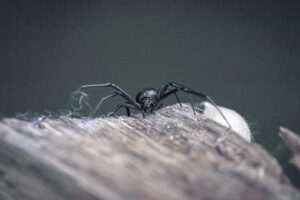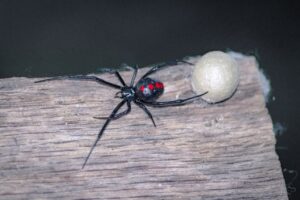The Black Widow Spider Who Eats The Male After Mating
Nobody likes having bugs in their home. But, of all the pests you may encounter, few are as frightening as spiders. Fear of spiders, also known as arachnophobia, is one of the most common and possibly the oldest human phobias.

The common name for black widow spiders comes from the perception that the female eats the male after mating, a rare occurrence in nature. These spiders are found worldwide, with five species established in the United States, and are distinguished by the red hourglass shape on the underside of their abdomen. Although fatalities are uncommon, the black widow’s venom is 15 times stronger than that of a rattlesnake and can cause muscle nausea, aches, and difficulty breathing.
Life Cycle of Black Widow Spiders
Black widows mate from spring to early summer. Most black widows grow from egg to adult in about a year. In some cases, female black widows consume males after mating, using them as sources of nutrients for egg fertilization. During the summer, female black widow spiders can lay several egg sacs.
Egg sacs are white, tan, or gray, with a paper-like texture and a 12 to 15 mm diameter. They can be pear-shaped or spherical. Each egg sac includes hundreds of eggs, which hatch into hundreds of spiderlings. However, only a few of these young survive because black widows are cannibalistic in their early stages of life.
The Appearance of Black Widow Spiders
Black widow spiders are usually black with two reddish triangular markings on the underside of their abdomen that are typically joined to form a reddish hourglass shape, their most distinguishing feature. Females are sometimes brownish-black. Females are more significant than males, and most black widow spiders are 3 to 10 mm long.
Young black widow spiders are mainly orange and white, but as they mature, they become blacker. They have markings similar to male adults, with one or two reddish markings on the underside of the abdomen.
Habitat of Black Widow Spiders
Black widow spiders prefer dry, dark areas to spin their webs. During the winter, they frequently seek out warm places. Black widow spiders prefer to live in protected areas outside; these areas include under decks and stones and in hollow tree stumps and firewood piles. Black widow spiders hide in sheltered, dimly lit areas, such as garages, basements, and crawl spaces. Black widows prefer dry manufactured structures such as barns, henhouses, outhouses, sheds, brick veneer, meter boxes, barrels, and woodpiles.
Habits of Black Widow Spiders
 Black widows are most active when the temperature is 70 degrees Fahrenheit or higher, but they can stay alive in lower temperatures if certain conditions are met. Black widow spiders spin irregular webs near the ground at night. When their webs are finished, these spiders hang upside-down in them, usually less than a foot in diameter. Their webs are used to catch prey. Black widows, like most spiders, feed on arthropods such as ants, beetles, cockroaches, scorpions, and others.
Black widows are most active when the temperature is 70 degrees Fahrenheit or higher, but they can stay alive in lower temperatures if certain conditions are met. Black widow spiders spin irregular webs near the ground at night. When their webs are finished, these spiders hang upside-down in them, usually less than a foot in diameter. Their webs are used to catch prey. Black widows, like most spiders, feed on arthropods such as ants, beetles, cockroaches, scorpions, and others.
Black Widow Spider Bites
Male black widow spiders rarely bite, but females, especially after laying eggs, may bite in defence. A black widow spider bite can cause high blood pressure, fever, sweating, and nausea. Pain is usually felt almost immediately and peaks in 1-3 hours. The pain involved with a black widow spider bite may last one to three days before subsiding.
The fatality rate from a black widow spider bite is unlikely if proper medical treatment is sought promptly. If you notice black widow spiders or signs of a spider infestation, contact a licensed pest control professional who can address black widow spider control safely and effectively.
Signs of an Infestation
Webs in the home are one of the most apparent signs of a spider infestation. Black widow spiders usually build sloppy, irregular webs near the ground. Another sign of a spider infestation is the discovery of a silken sac containing eggs in the doorway. Professional black widow spider extermination may be required if you notice these symptoms.
Black Widow Spider Prevention
People can minimize their chances of being bitten by a black widow spider by clearing the clutter in basements and garages and eliminating their hiding places. Avoid putting your hands or feet in that area when spider webs are visible. For items that have been stored for an extended period, you should also wear heavy gloves and shake out your shoes before wearing them.
Store firewood on a raised structure at least 20 feet from the property. Call a black widow control and extermination expert immediately if you suspect a spider infestation. This is the most secure method of eliminating black widow spiders in the home.




